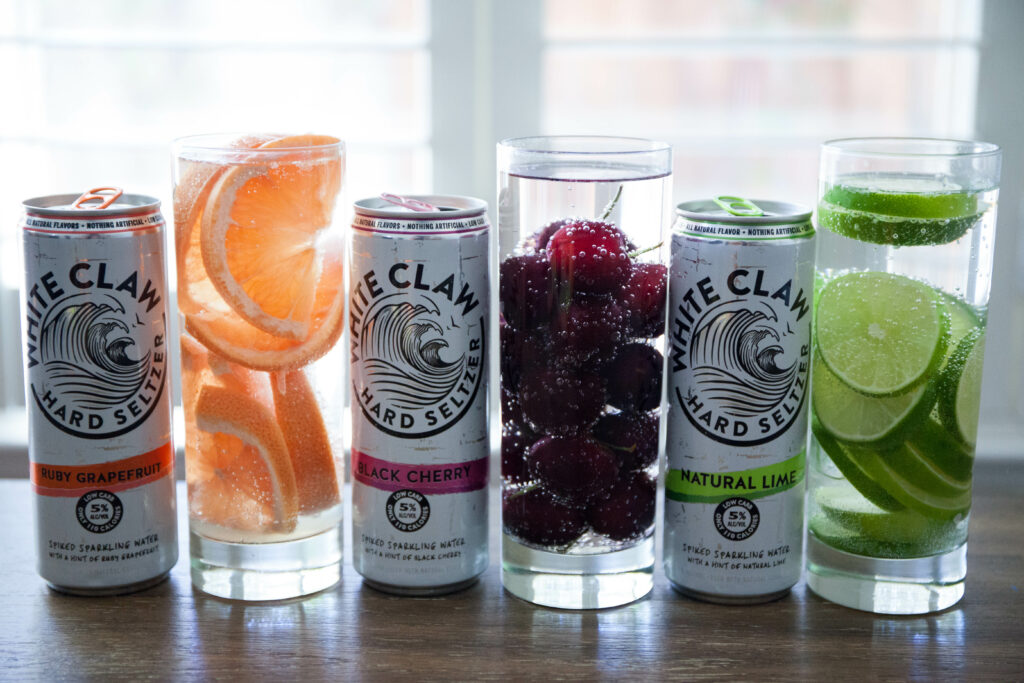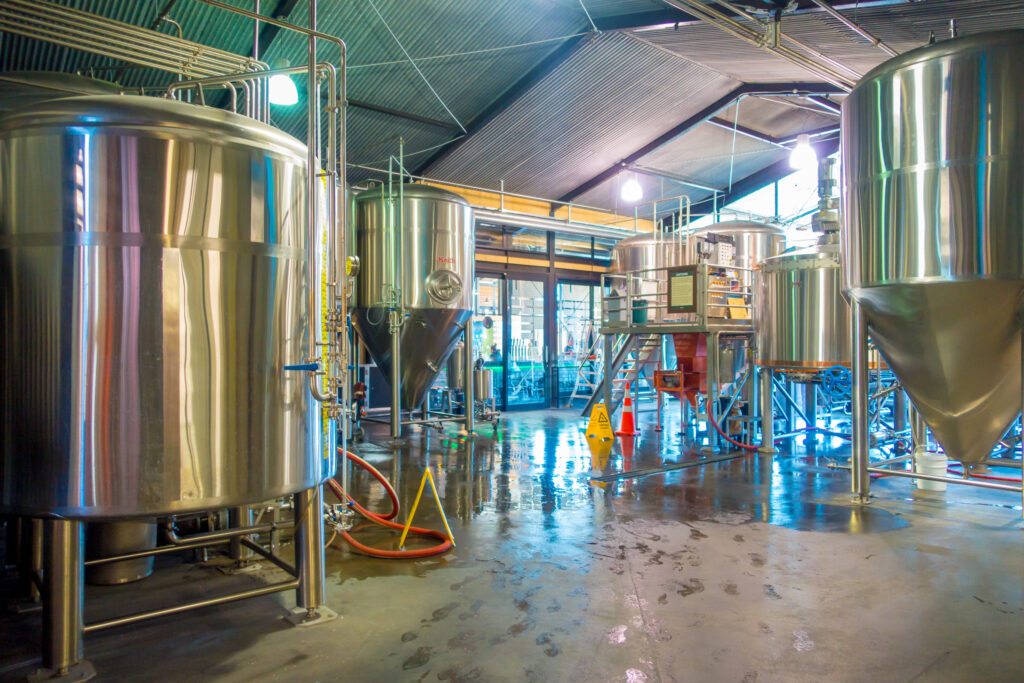By: Erik Myers

It’s hard to deny that this past summer was the summer of hard seltzer. In fact, it was a summer that saw hard seltzer grow to more than $1 billion dollars in sales. In just the week of July 4 this past summer, White Claw and Truly seltzers combined sold over 100,000 barrels of product. That’s enough to put them in the Top 50 Craft Breweries for production over the whole year. It’s no surprise that craft breweries large and small are looking to tap into the apparent gold mine that is hard seltzer, but how they approach it doesn’t quite seem to stand up against the segment’s largest competitors, and that’s worth thinking about. At a recent industry panel in Charlotte, NC, several craft brewers who make seltzers spoke about their perspectives on this new slice of the industry.
But… Why?
This might seem fairly obvious with the sales numbers that hard seltzers are putting up, but a closer look at the craft beer industry tells a slightly different story. Recently in an interview, the senior vice president of marketing for Mark Anthony Brands (the makers of White Claw) noted that though White Claw has incredible penetration in grocery stores and liquor stores nationwide, only about 20 percent of bars and restaurants are currently selling hard seltzers. For the average small craft brewer, the opposite is true – while the limited shelf space of grocery is locked behind the arcane process of distributor-led Planograms, inaccessible to most small breweries, they are nearly ubiquitous on draft systems in bars and restaurants eager to serve local beer. So, why chase a segment which shows so little relevance in their primary market?
“After the surge of LaCroix in the non-alcoholic market, we took a hard look, and it’s what our market research showed our customers wanted,” said Colleen Quinn, of Craft Beer Alliance (CBA). Their market research showed something else interesting – that while most hard seltzers are marketed specifically toward young women, their targeted demographic tended to skew almost 50-50 male-female. It led to CBA’s decision to package their multiple seltzer brands in regular 12 ounce cans, rather than slim cans like their competitors.
“I’m looking for one more reason to keep the customer in their seat,” says Mike Rollinson of Joymongers Brewery, a brewery that enjoys two taproom locations in Central North Carolina, but no off-premise distribution. “I don’t see it as craft. I’m not making a seltzer for beer drinkers. I’m making a seltzer for the one person in a group of 5 people who will pressure the group into leaving if there’s not something for them to drink.” Rollinson just started making seltzers this year as he saw the trend grow, noting that one of his business partners is on a Keto diet and now drinks his seltzer almost exclusively – as a healthy alternative to beer.
Clear or Colored – the Question of Craft
While the two major market players, White Claw and Truly, are both crystal clear beverages, two of the producers on the panel noted that color helped them differentiate. Both Brian Quinn of Town Brewing Company and Lindsay Sprick of NoDa Brewing Company pointed to their process as an advantage over the big seltzer makers.
“I can guarantee that nobody at White Claw was sitting down last week processing a ton of raw ginger,” Quinn noted with a smile. “We’re small enough that we can use natural ingredients as a base for these seltzers.” Those natural ingredients come with their own colors and – he thinks – customers want to see the presence of those ingredients in the product when they’re ordered. “When you get something that’s wild cherry flavored and it’s clear, you ask yourself: where’s the cherry in this?”
Sprick, of NoDa, shared a similar feeling: “We stand out because we’re using the same ingredients that we use make our beer.” She felt that it was more true to the brand and brewing ethos of NoDa Brewing Company than a clear, sparkling beverage. NoDa’s Brizo Seltzer, unlike other seltzers represented on the panel, is barley-based, which lends even more color to the finished product than the others.
Rollinson had a different take at Joymongers. “When I see a color, like red or blue or purple in a glass, that reads ‘sweet’ to me, and that’s not what this is.” He mentioned that because his primary customer is not one that’s seeking this for a fruit flavor, but rather as an alternative beverage or a more healthy choice, that the neutral color was a better choice. “The only people who have complained about it being clear were bartenders because they throw it out by mistake because they think it’s water.”
Regulatory Loopholes
Interestingly, hard seltzers fall into a slight grey area of regulation from both the Trade and Tax Bureau (TTB) and the Food and Drug Administration (FDA). Hard seltzers are the product of fermenting sugar into alcohol and fall under the manufacturing umbrella of a brewery, but labeling considerations vary based on what sugar base is used as the basis of fermentation. A brewer who uses a barley base – even a very light brewer’s malt – still falls under the definition of a beer, requiring a pre-market Certificate of Label Approval (or COLA) and is restricted by certain advertising laws. A brewery who uses sugar as the base for their seltzer is not required to obtain TTB approval as it is not a malt beverage. However, they do fall under FDA labeling guidelines which require a nutrition panel and a list of ingredients.
While it might seem attractive to a brewery to skip TTB approval and jump straight to FDA labeling because the FDA does not have pre-market approval requirements, it’s important to know that FDA labeling is required to be in compliance before sales and that manufacturers can be held liable to both financial and regulator consequences. Consult your lawyer for best practices.
None of the panelists chose to share which path they had taken from a regulatory standpoint.
What’s in the Mix
Clearly, there are as many ways to approach making hard seltzers as there are reasons to make it. Fermenting white sugar seemed to be the preferential approach to creating a fermentation base for hard seltzers. Of the panelists, NoDa was the only one using barley.
Most of the panelists spoke of these seltzers as good gluten-free alternatives to beer and marketed their seltzers as either gluten-free or gluten-reduced. NoDa used ClarityFerm from White Labs to reduce gluten content in their barley-based seltzer but others simply brewed on their normal equipment directly after “CIP day” in order to guarantee no gluten would be present in the final product. Quinn of Town Brewing shared that lab results showed no traces of gluten in his products.
From there, the small producers all had a similar strategy of using whole ingredients to flavor as they would for any flavored beer, whether that’s the addition of aseptic fruit puree or hand processing ginger for additions during fermentation. They seemed to feel that the use of “real ingredients” was a way to stand out versus large scale competitors from a flavor standpoint as well as an ethical one. They appeared to share the belief that it “felt more like craft.”
Yeast was a large differentiator between the producers. While Rollinson at Joymongers used ale yeast to ferment his seltzer, making a note that harvested yeast seemed to perform much better than a fresh pitch, Quinn of Town used Distiller’s Yeast, seeking a strong, healthy fermentation that would get as dry as possible. Both mentioned the need for high amounts of yeast nutrients. “As it turns out,” Rollinson joked, “yeast doesn’t really like to digest straight glucose.”
Where It’s All Going
All of the panelists agreed: hard seltzer is a trend that is doing nothing but growing, and they all agreed that their futures had more and varied seltzers in it. Each of them was excited to experiment in the market and push the bounds of craft’s involvement in the segment.
The question remains for you – will we continue to see on-premise growth in a meaningful way that the craft market can take advantage of, or will hard seltzer grow only in larger and larger stacks in grocery stores? We’ll have to wait for the next White Claw Summer to find out.









